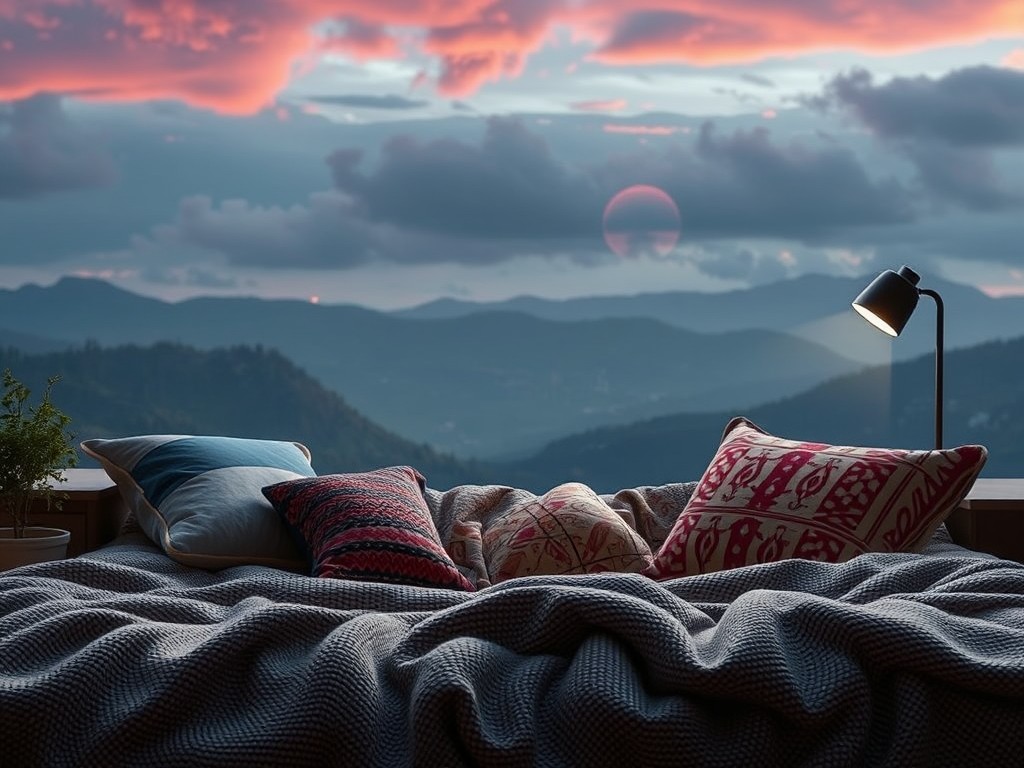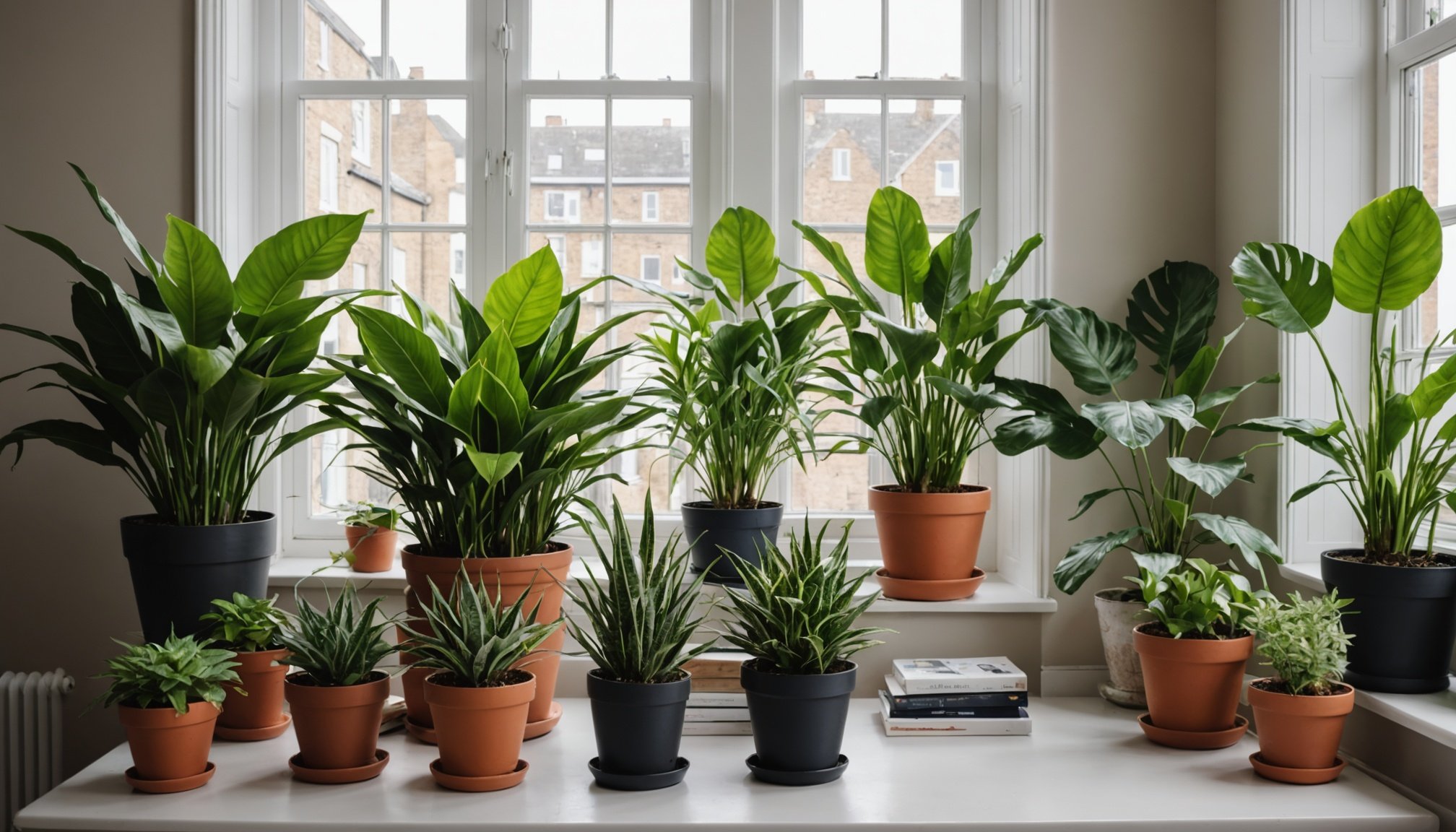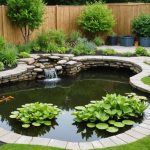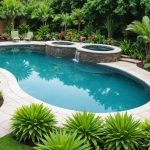Introduction to Indoor Plants for Low-Light Environments
When it comes to indoor plants, selecting the right varieties is crucial, especially for those living in spaces with low-light conditions. Many UK homes face this challenge due to architectural design or geographical positioning, making it essential to choose plants that thrive without much sunlight. Knowledgeable plant selection not only enhances the aesthetics of your home but also ensures that your leafy friends flourish.
Importance of Plant Selection
Low-light environments necessitate particular attention to the types of indoor plants you bring into your home. Choosing plants that naturally adapt to such conditions can save you frustration and disappointment. These plants are usually more tolerant of dim spaces and can improve air quality, making your indoor environment healthier.
A lire en complément : The Ultimate Guide to the Ideal Season for Pruning Fruit Trees in the UK
Suitable Plants for UK Homes
There are various indoor plants well-suited for low-light conditions commonly found in UK homes. Some popular choices include the Snake Plant, Peace Lily, and ZZ Plant. These plants naturally thrive in lower light, require minimal maintenance, and can add a refreshing touch to your interior décor.
Benefits of Indoor Plants in Low-Light Spaces
Beyond their beauty, indoor plants in low-light spaces offer several benefits. They can purify the air, reduce stress, and create a sense of tranquility in your home. By carefully selecting the right plants, you’re not just decorating; you’re cultivating a healthier living environment.
A lire également : Discover the Best Edible Mushrooms to Grow in the Shade of Your UK Backyard!
Top Low-Light Indoor Plants for UK Homes
Choosing the best low-light indoor plants is key to elevating your living space while maintaining minimal upkeep. Here are some hardy houseplants that thrive in low-light conditions, making them perfect for UK homes:
-
Snake Plant: Renowned for its resilience, the Snake Plant tolerates neglect and adapts well to varying lighting conditions. Its upright leaves are a striking feature, and it grows slowly, making it an ideal choice for beginners.
-
ZZ Plant: Known for its shiny, dark green leaves, the ZZ Plant is one of the best plants for shade. It requires little water and can survive in dimly lit areas, growing steadily without demanding constant attention.
-
Pothos: The Pothos plant thrives with minimal sunlight and offers lush, trailing vines. It’s perfect for draping over shelves or hanging baskets, adding elegance to any room. Its vibrant leaves energize spaces, even without direct sunlight.
-
Spider Plant: This plant adjusts seamlessly to indoor environments. Best known for its arching leaves with white stripes, it is not only hardy but also purifies the air. Spider plants are easy to propagate, allowing you to expand your collection with minimal effort.
These options offer both aesthetic appeal and adaptability, ensuring your home stays green, regardless of the light available.
Care Instructions for Low-Light Indoor Plants
Taking care of low-light indoor plants involves understanding their unique watering needs and maintenance requirements. These plants usually prefer less water compared to their sun-loving counterparts. To prevent overwatering, ensure the soil is well-draining and only water when the top one to two inches of soil feel dry to the touch. This technique helps maintain the right moisture balance and prevents root rot, a common issue in low-light plant care.
In terms of fertilizing, low-light plant maintenance calls for careful consideration. These plants often grow slowly, reducing their nutrient needs. Providing a balanced, water-soluble fertilizer every six to eight weeks during growing seasons can suffice. In dim lighting, excessive fertilization can harm more than it helps, often leading to nutrient build-up.
Pruning and cleaning leaves are crucial for optimal plant health. Regularly remove dead or yellowing leaves to encourage new growth and increase air circulation. Dust accumulated on leaves can hinder photosynthesis; gently clean the foliage with a damp cloth to keep it unclogged. By following these steps, your low-light indoor plants can thrive even in less-than-ideal lighting conditions, showcasing their beauty all year round.
Environmental Considerations for Indoor Plants
Understanding ideal temperature ranges and humidity levels is critical for maintaining healthy low-light indoor plants. These plants typically thrive in temperatures between 15°C and 24°C (59°F to 75°F). This range mimics their natural environment, creating conditions in which they can grow optimally.
Temperature Requirements
For low-light indoor plants, it is vital to monitor the temperature requirements closely. Fluctuations, especially exposure to extreme cold or intense heat, can stress the plants, leading to poor growth or disease.
Maintaining Appropriate Humidity Levels
Humidity is another essential factor. Low-light plants often prefer a humidity level of 50% or higher. If the air in your home is particularly dry, consider misting the plants regularly or use a humidifier to elevate moisture levels. This is crucial during winter months when indoor air becomes drier due to heating systems.
Effective Placement Recommendations
When placing low-light plants in your home, consider corners or areas away from direct sunlight, but with enough ambient light to sustain growth. Avoid placing them near draughty windows, radiators, or air vents to prevent environmental stress. Proper positioning will help maintain the ideal indoor plant environment, supporting overall plant health and vitality.
Common Concerns Regarding Indoor Plants
Indoor plant enthusiasts often face challenges like plant toxicity, impacting pets, and various indoor plant issues. When it comes to plant toxicity, certain common houseplants such as English ivy and peace lilies pose risks to pets. For pet owners seeking alternatives, the spider plant or Boston fern are excellent pet-safe options.
Another concern is the yellowing of leaves, mainly due to inadequate light. This issue can be tackled by choosing plants that thrive in low-light conditions, such as the snake plant or pothos. It is essential to regularly rotate these plants to ensure even exposure, promoting healthier growth.
Dealing with pests is yet another common indoor plant issue. Tiny invaders like spider mites and aphids can quickly damage a plant’s health. To combat these pests, try introducing natural predators, like ladybugs, or apply neem oil as a natural pesticide. A gentle wash of leaves can also help fend off these unwelcome guests.
By addressing these challenges head-on, indoor plant owners can enjoy a thriving, beautiful indoor garden while ensuring a safe environment for their pets. Choosing the right plants and implementing practical solutions is crucial for managing potential problems effectively.
Expert Recommendations and Resources
Delving into the world of indoor gardening, especially with low-light plants, can be both intriguing and challenging. Expert advice is invaluable for nurturing these plants and ensuring they thrive. Horticulture experts suggest selecting plants like snake plants or pothos, which are well-suited for low-light conditions. These experts advise monitoring humidity levels and using well-draining soil to promote healthier growth.
For those keen on expanding their knowledge, various plant care resources can be highly beneficial. Recommended literature includes “The Complete Houseplant Survival Manual” by Barbara Pleasant, offering detailed insights into the care of low-light plants. Online platforms such as gardening forums and YouTube channels also provide a wealth of indoor gardening tips, helping individuals tailor their plant care techniques.
Personal experiences from seasoned indoor gardeners highlight the importance of continuous learning and adaptation. Many have shared that joining online gardening communities has enhanced their understanding of low-light plant care. Discussion threads often reveal practical solutions, such as adjusting watering schedules or optimizing room placement for better light exposure.
Compiling insights from both experts and everyday gardeners can empower plant enthusiasts. Embracing the collective wisdom from these resources aids in fostering a thriving indoor garden even in less-than-ideal light conditions.
Visual Comparisons of Low-Light Plants
Observing plant visuals is essential when selecting indoor plants, especially those that thrive in low light. Illustrating the variations among popular low-light plants can assist plant enthusiasts in making informed decisions. Differences in indoor plant aesthetics include leaf shape, texture, and colour. For instance, the Snake Plant has tall, sword-like leaves offering a sleek modern appeal, while the ZZ Plant features glossy, oval-shaped foliage that adds a touch of elegance.
A comparative analysis of growth habits and aesthetics helps highlight the unique features of selected plants. Consider the Peace Lily, which boasts a graceful, arching form with occasional white blooms, compared to the Philodendron Birkin with its striking variegated leaves and compact growth. Such comparisons allow home decorators to choose plants that align with their interior design preferences.
The significance of aesthetics extends beyond mere decoration. The right choice of low-light plants can enhance a room’s ambience and contribute to the overall mood. Selecting plants with complementary visuals can create a harmonious environment, seamlessly integrating the natural charm of greenery into the home. As you evaluate these visual differences, it becomes easier to select low-light plants that suit your personal style and living space.











